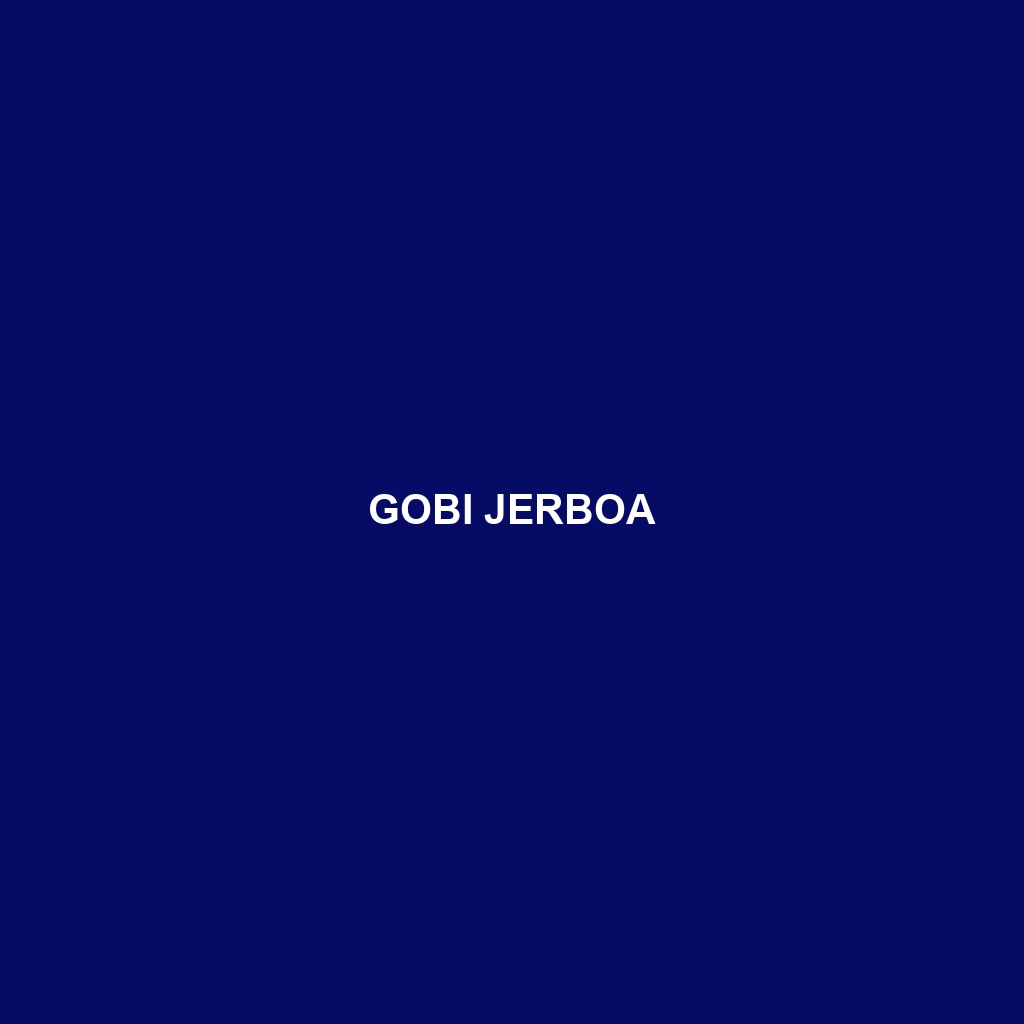Gobi Jerboa: An Overview
Common Name: Gobi Jerboa
Scientific Name: Allactaga sibirica
Habitat
The Gobi Jerboa is primarily found in the arid regions of Central Asia, particularly in Mongolia and parts of northern China. These fascinating creatures inhabit desert ecosystems characterized by vast stretches of sand dunes, gravel plains, and sparse vegetation. They have adapted to survive in extreme temperatures and often seek shelter in burrows to escape the harsh environmental conditions of their habitat.
Physical Characteristics
Gobi Jerboas are small, nocturnal mammals, measuring approximately 10 to 15 centimeters in body length, with a tail that can be nearly twice their body length. They possess a lightweight frame, large ears, and long hind legs, which are perfectly adapted for hopping and quick movements in their sandy habitats. Their fur is typically sandy or reddish-brown, providing excellent camouflage in the desert environment, while their distinctive large, tufted tails help with balance during agile leaps.
Behavior
Gobi Jerboas are known for their unique hopping locomotion, similar to that of kangaroos, which allows them to cover significant distances quickly while evading predators. They are primarily nocturnal, emerging at night to forage for food and avoid the daytime heat. Socially, they are relatively solitary, but they exhibit behaviors such as burrowing and scent-marking to establish territory.
Diet
The diet of the Gobi Jerboa consists mainly of seeds, grains, and various plants, making them primarily herbivorous. They have been observed foraging for roots and underground plant parts, utilizing their strong teeth to access these food sources. In arid conditions, they are known to consume moisture-rich foods that help them stay hydrated, crucial for survival in their desert habitat.
Reproduction
Gobi Jerboas typically breed in spring, when environmental conditions are most favorable. The gestation period lasts about 25 days, after which the female gives birth to 2 to 5 offspring. The young are born hairless and blind, relying heavily on their mother for nourishment and protection during their early days. Weaning occurs around 3 weeks, and the young are independent by the time they reach 2 months of age.
Conservation Status
Currently, the Gobi Jerboa is listed as Near Threatened by the International Union for Conservation of Nature (IUCN). Their populations are threatened by habitat loss due to human activities such as agricultural expansion and climate change, making conservation efforts essential for their survival.
Interesting Facts
– Gobi Jerboas can leap up to 3 meters in a single bound, showcasing their remarkable agility.
– They have specialized adaptations in their feet that allow them to move swiftly across sandy terrain without sinking.
Role in Ecosystem
In their desert ecosystem, Gobi Jerboas play a vital role as both herbivores and prey. By consuming seeds and plants, they contribute to the dispersal of vegetation, which can help maintain the balance of their habitat. Additionally, they serve as a food source for various predators, including birds of prey and small mammals, thus maintaining the ecological food web.
This SEO-optimized species description offers an informative overview of the Gobi Jerboa, with a structured format designed for easy readability and enhanced search visibility.
